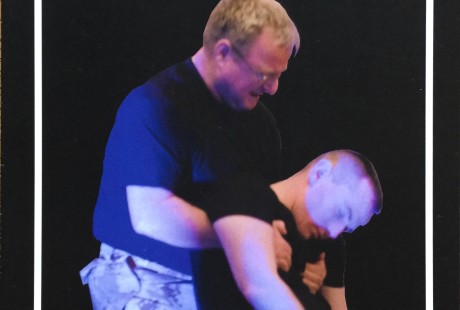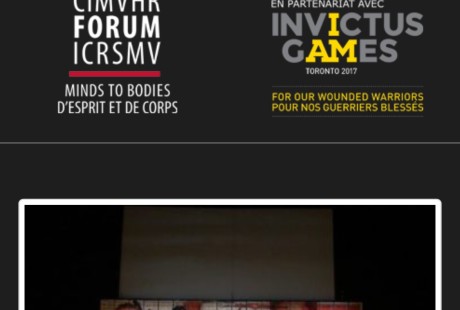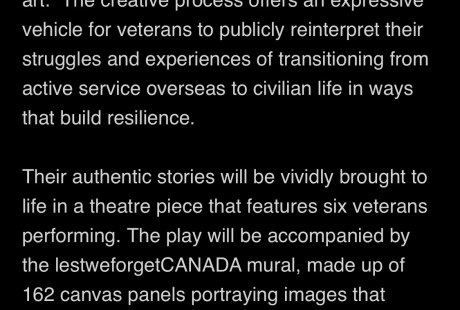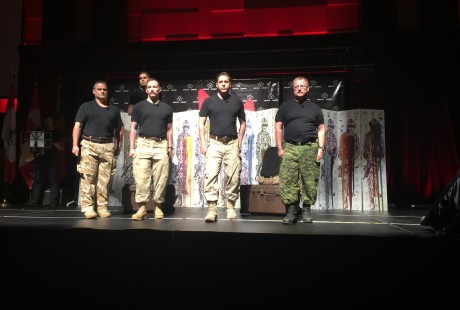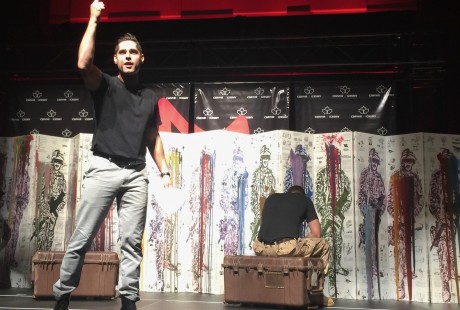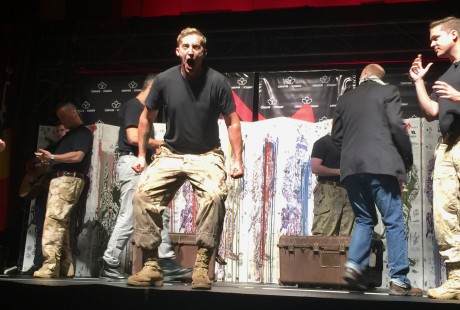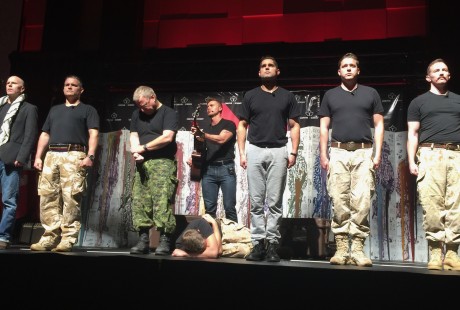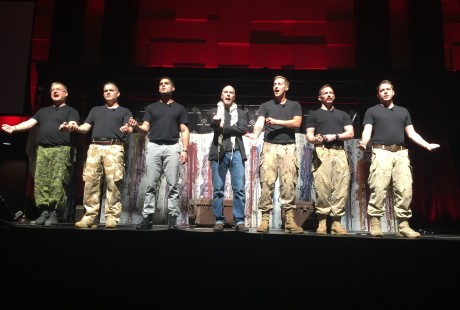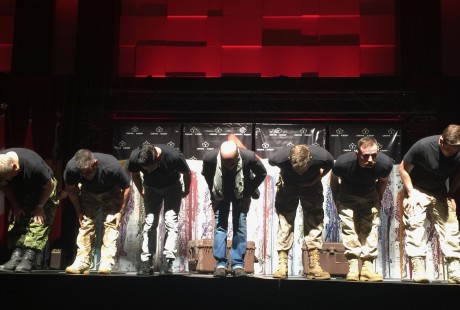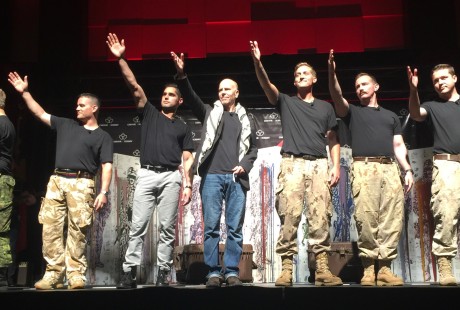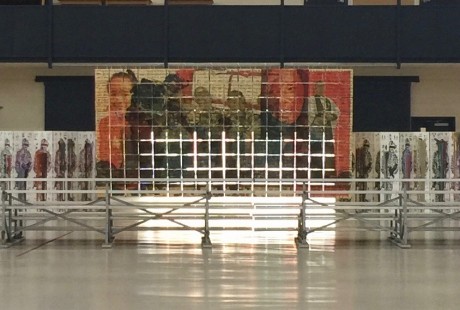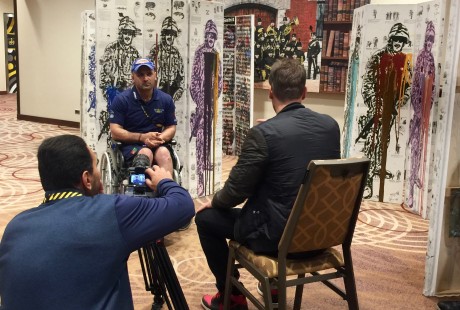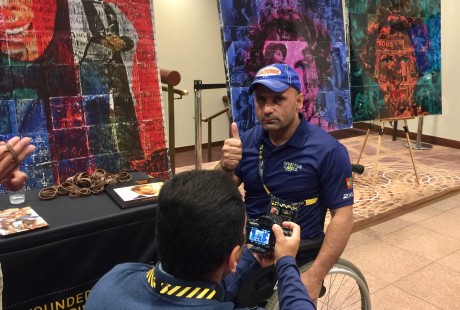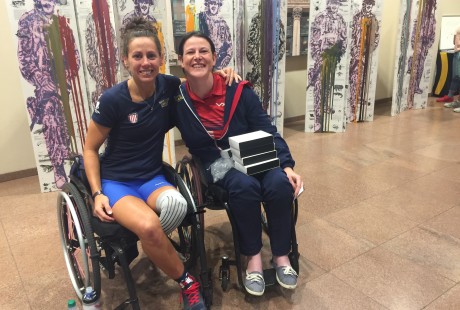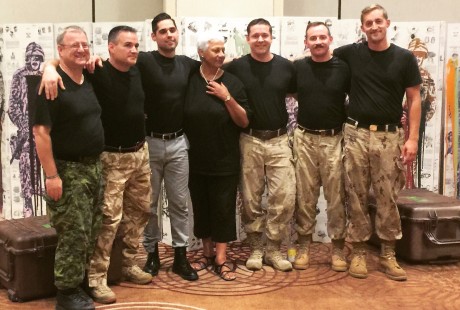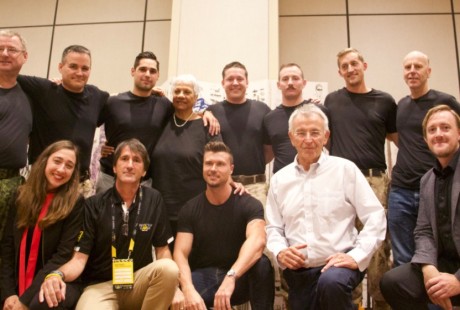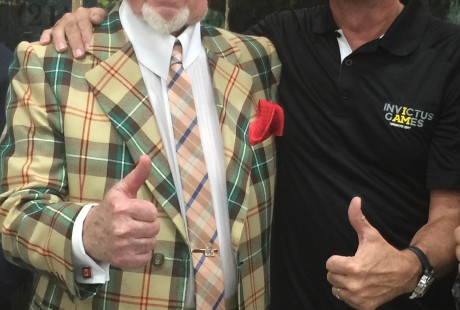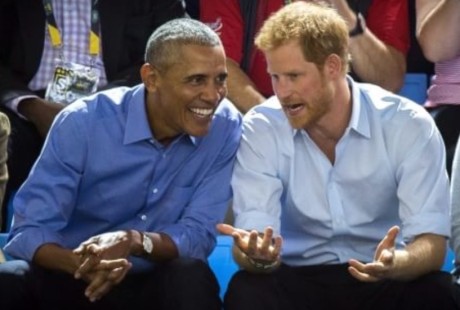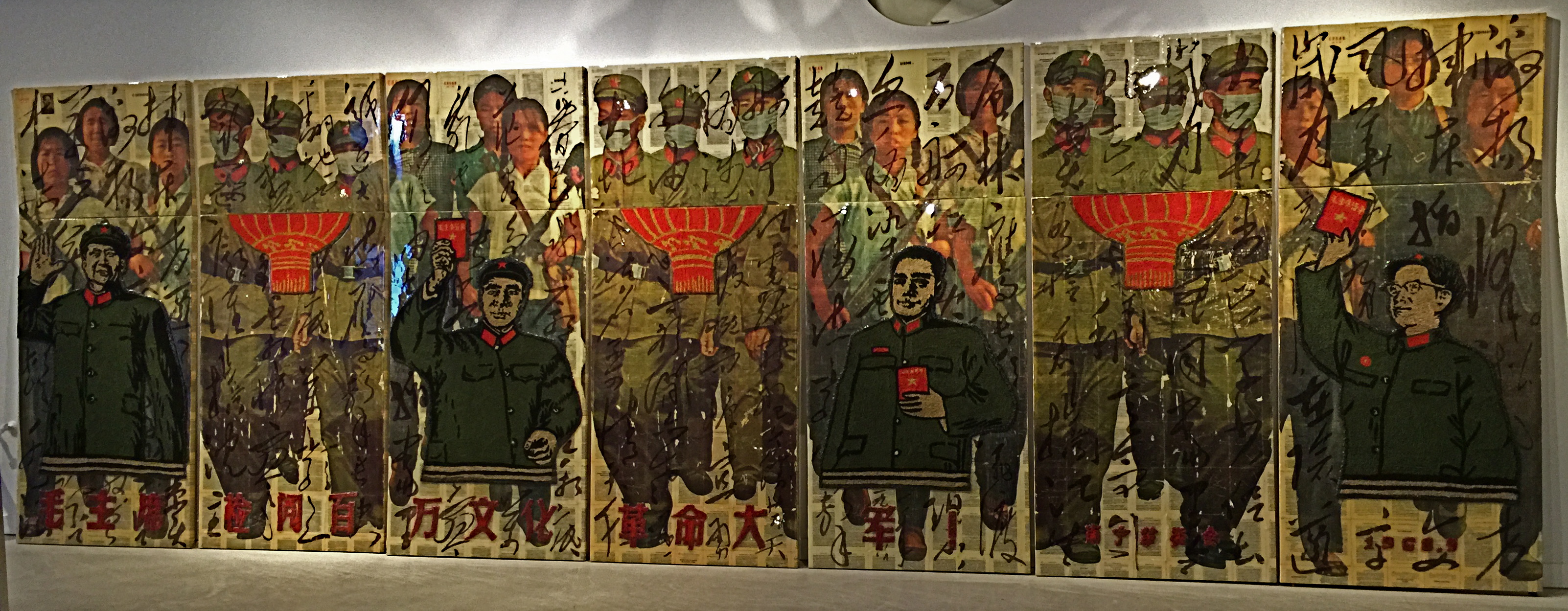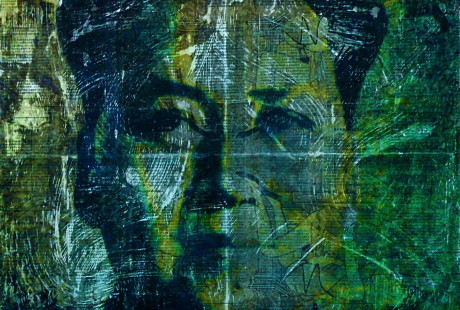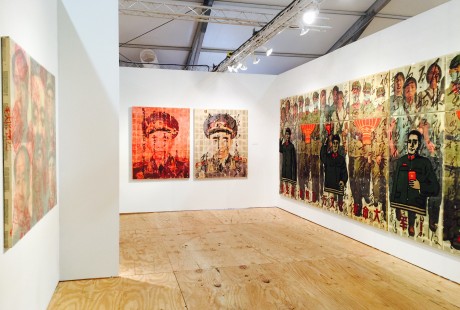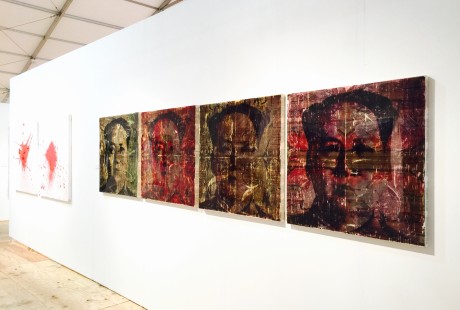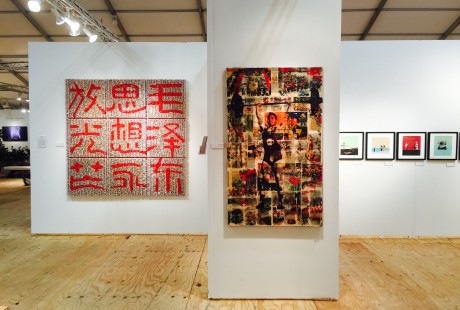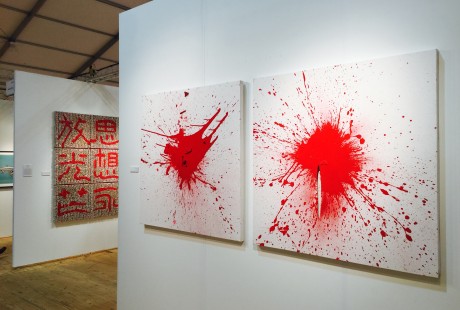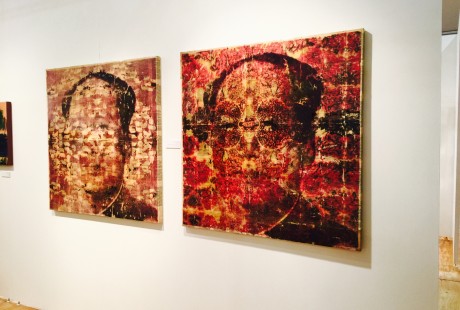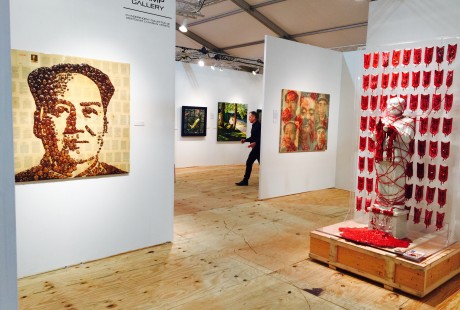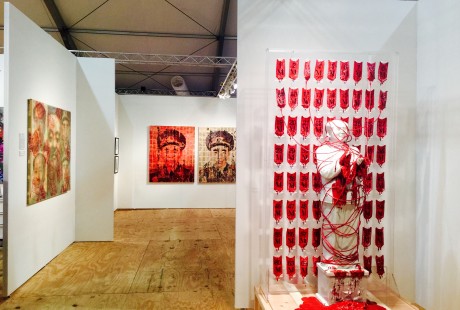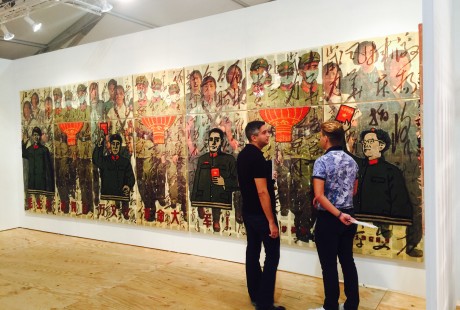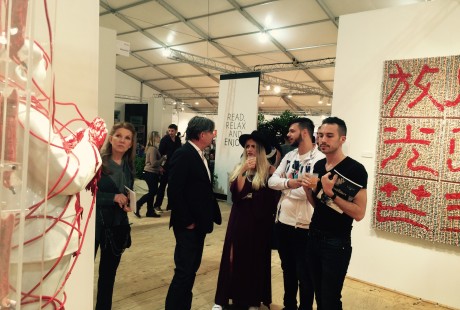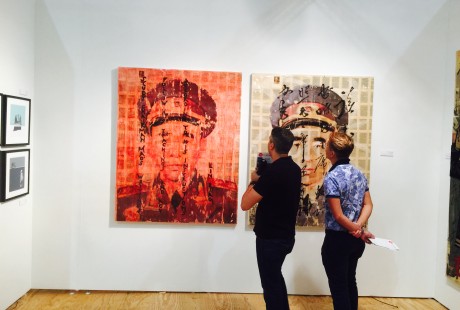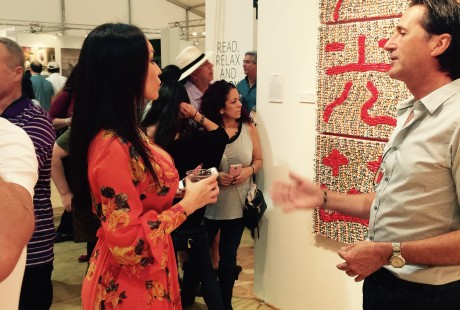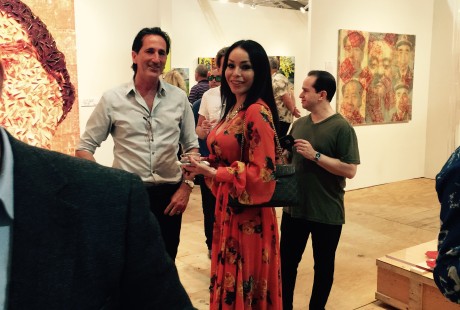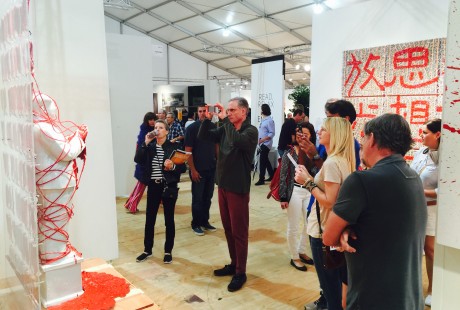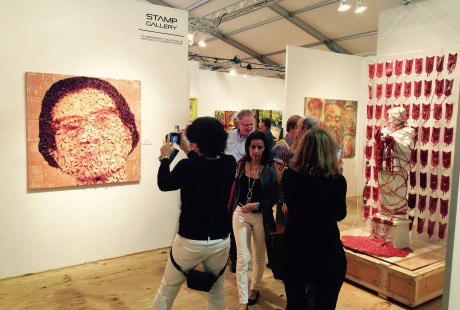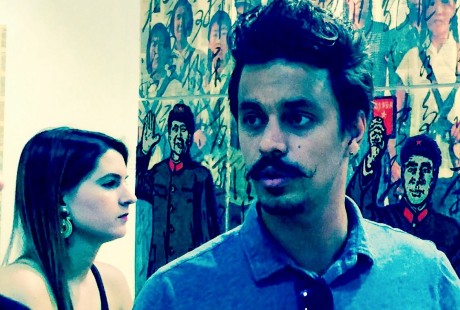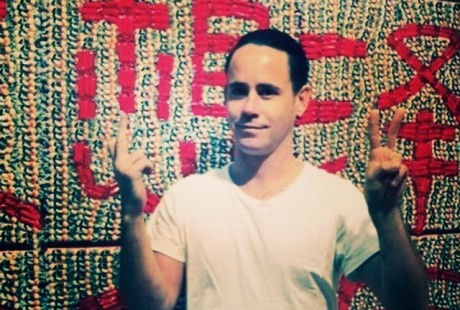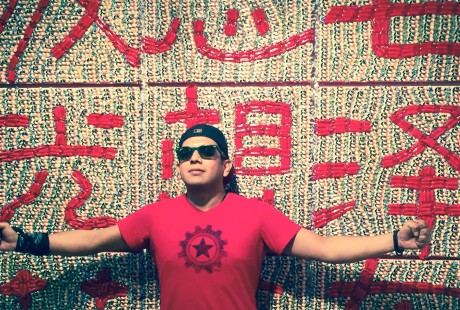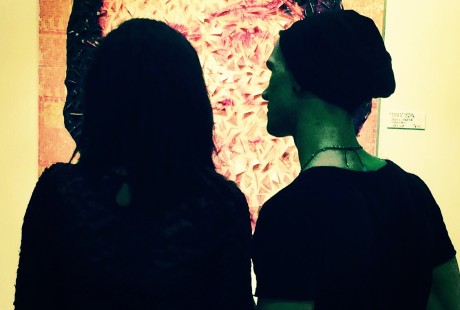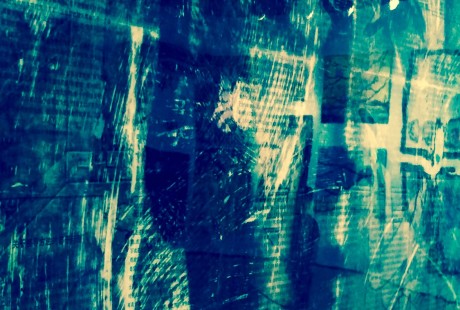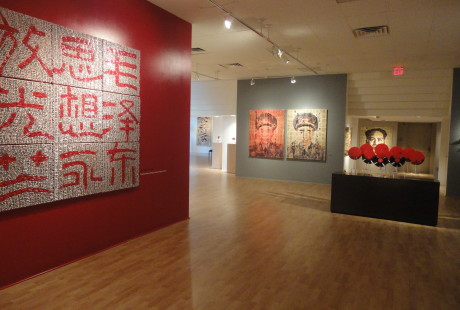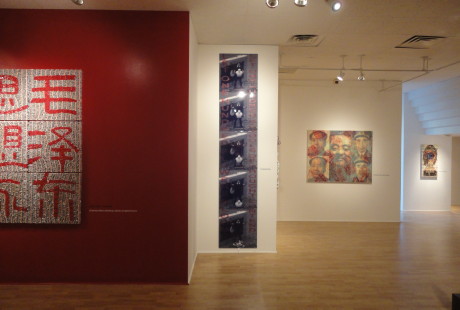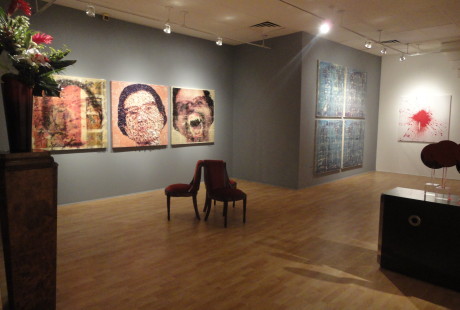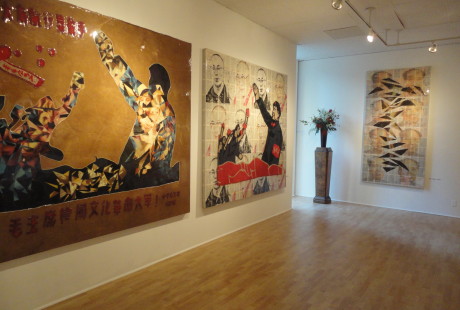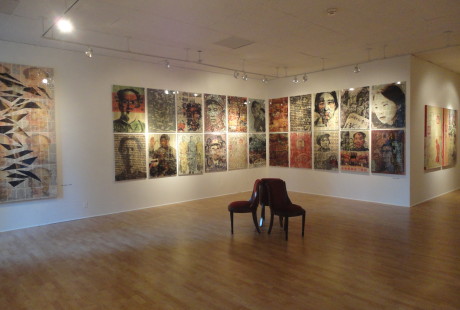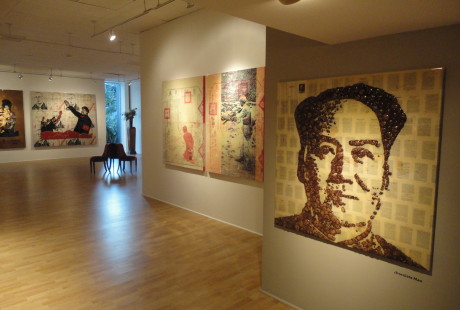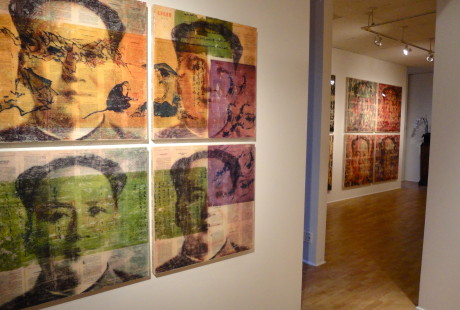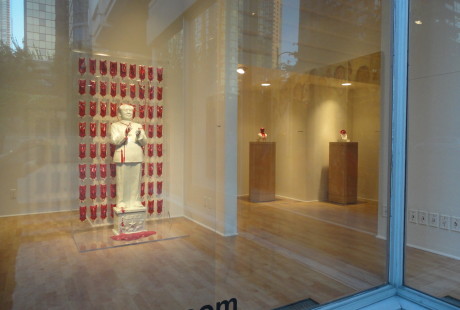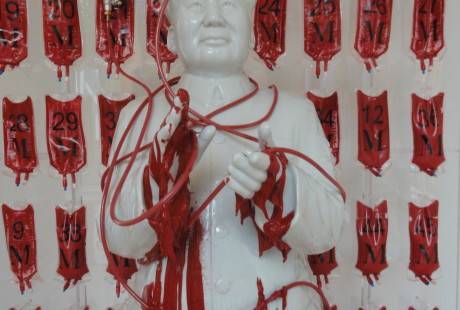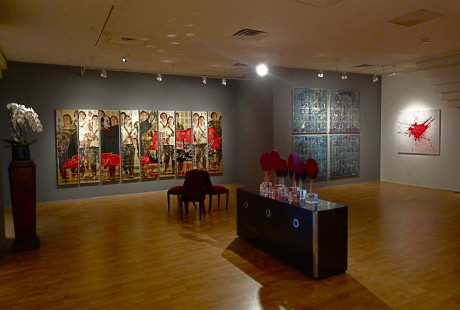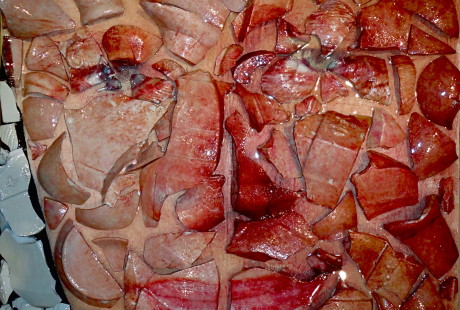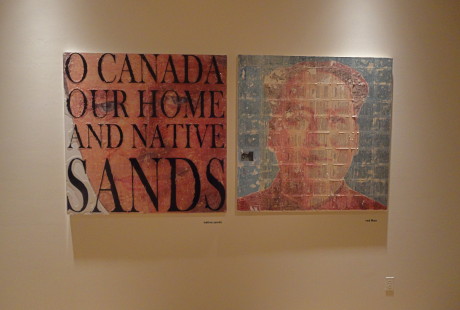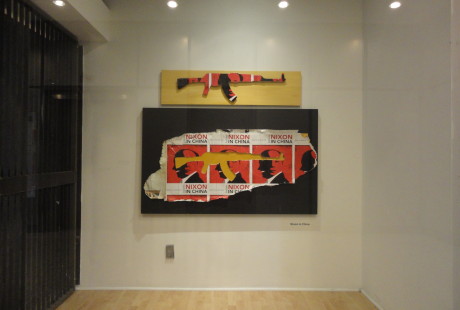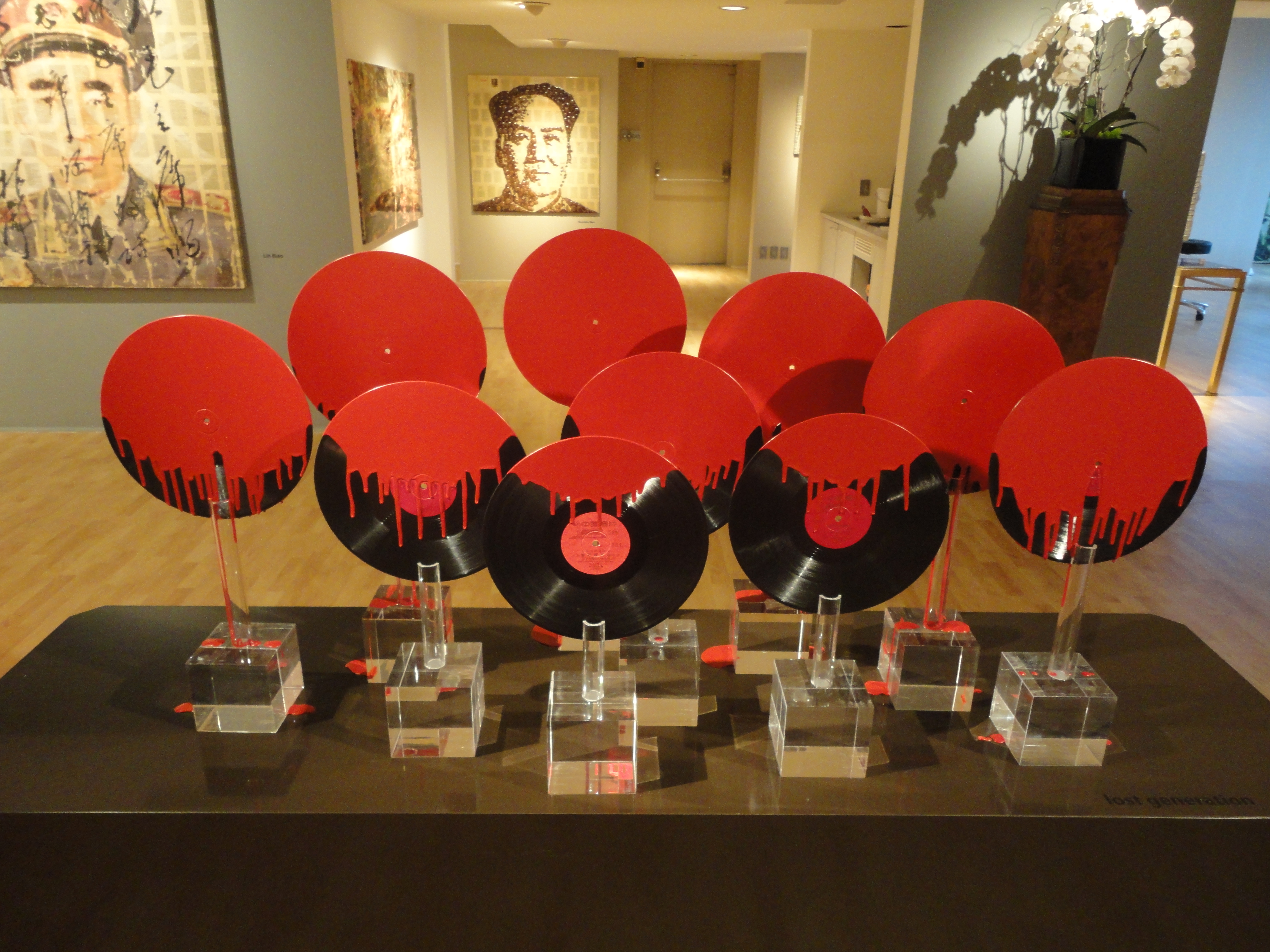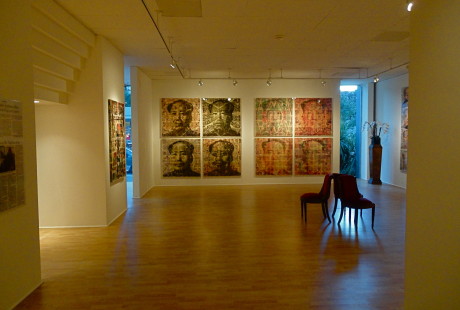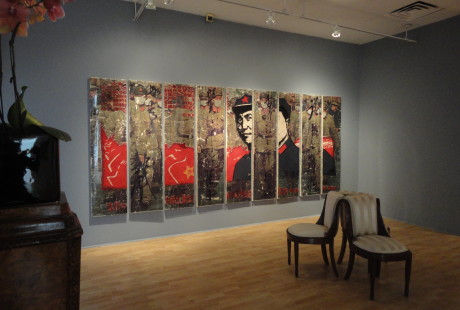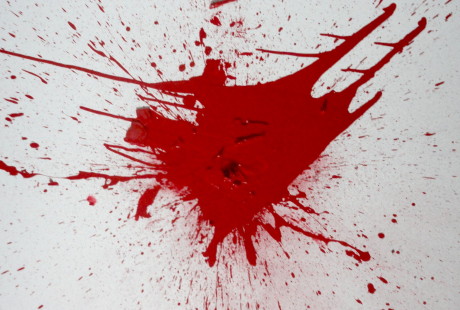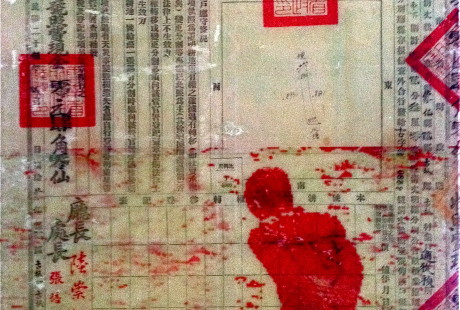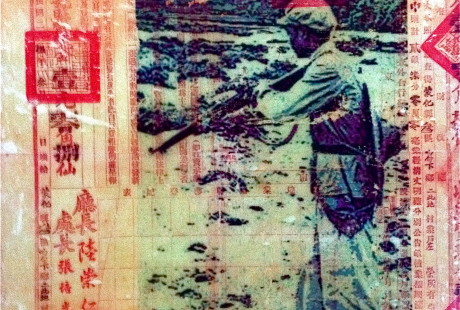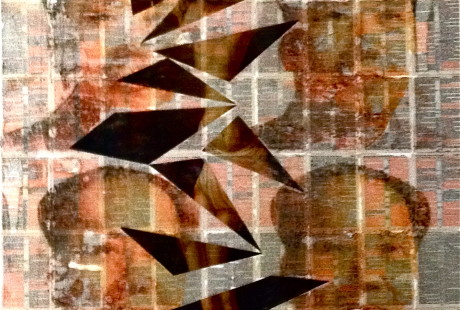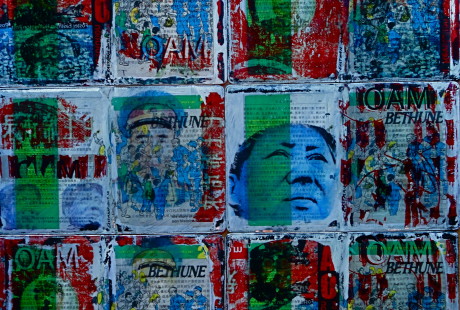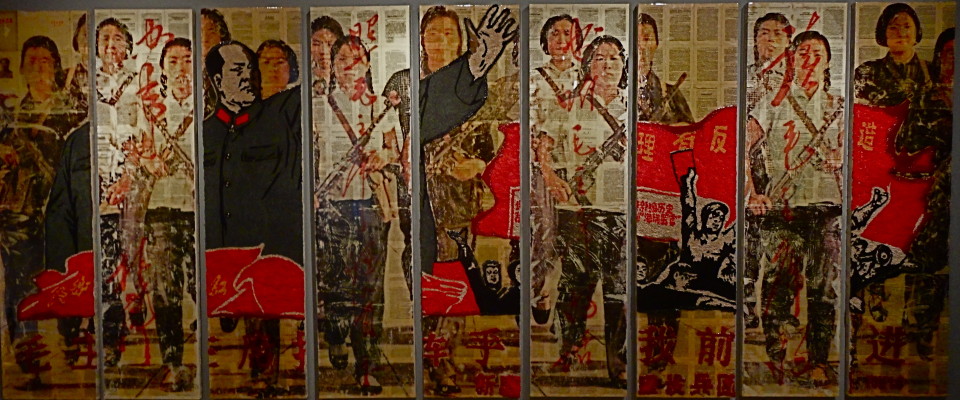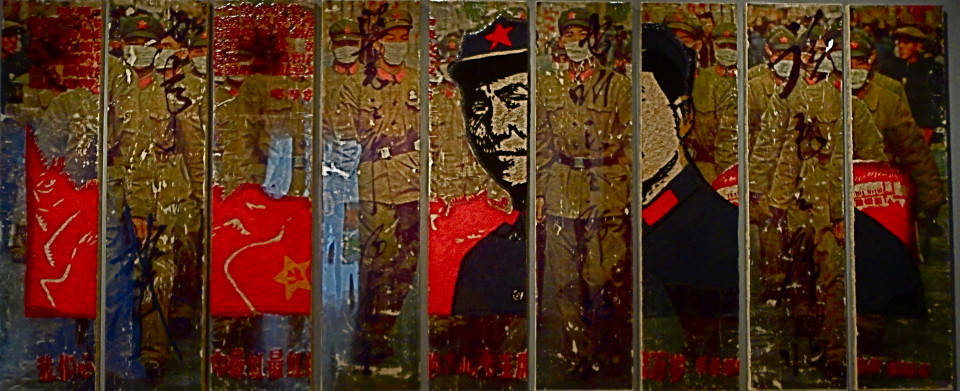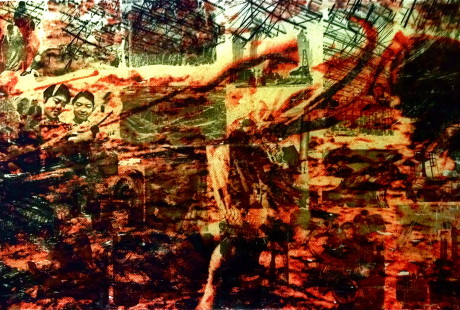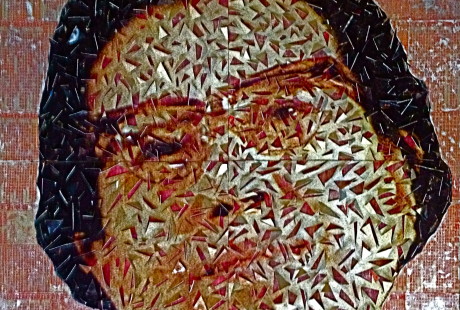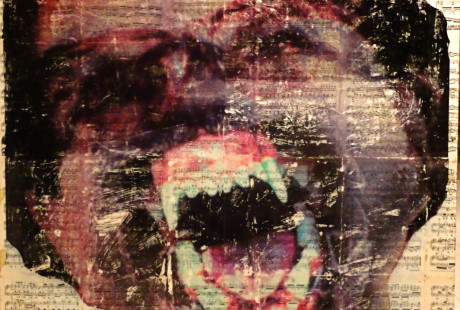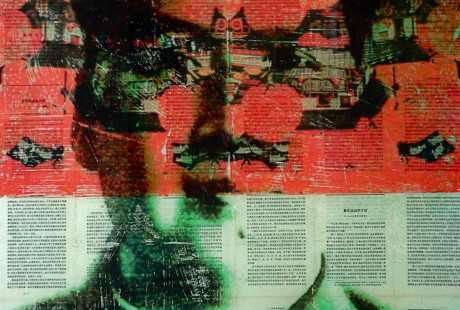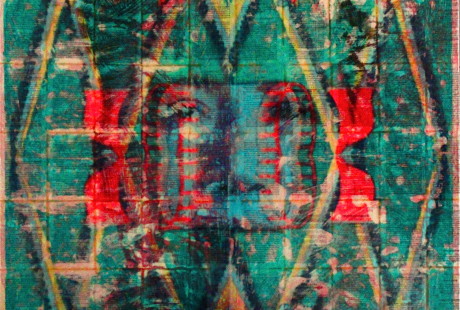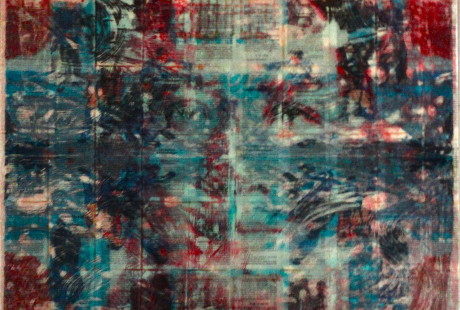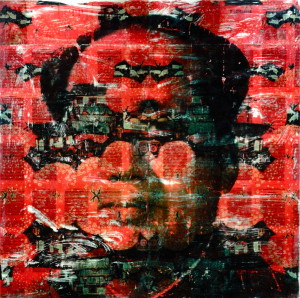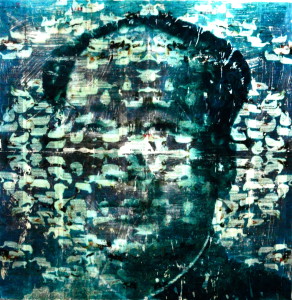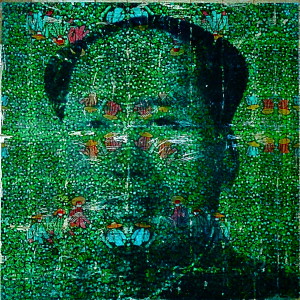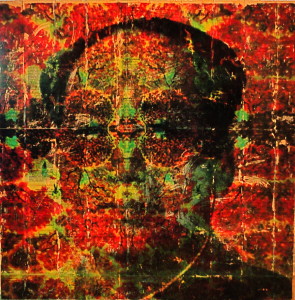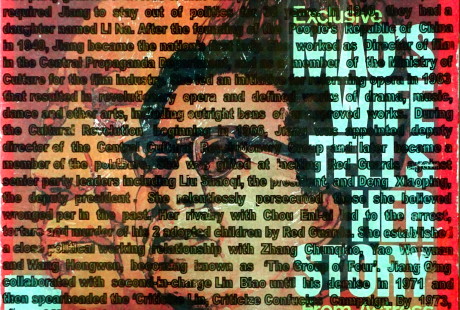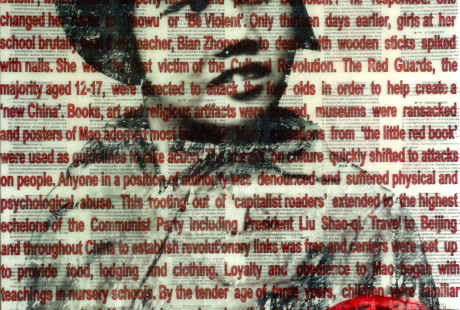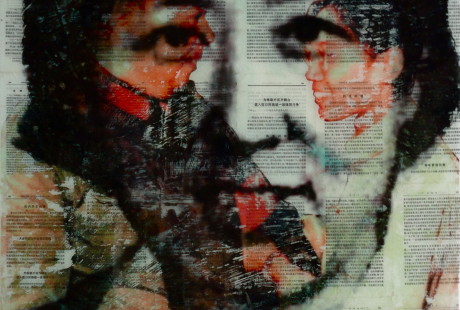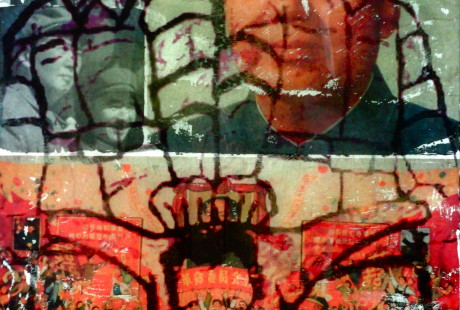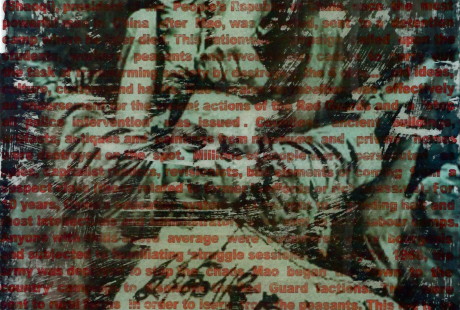Jiang Qing
MAO : death by 1000 cuts
On 23, Nov 2015 | In b) MAO works | By foster eastman
Jiang Qing was an amazing orator and would work red guards into a frenzy screaming ‘death by a 1000 cuts… down with Lui Shaoqi’. This was an ancient Chinese method of torture and execution. Jiang Qing’s image has been transfered onto pages of a 1958 Chinese Almanac. This book was banned during the Cultural Revolution due to it’s superstitious content. The image has been cut 1000 times.
MAO : Mao’s dog
On 23, Nov 2015 | In b) MAO works | By foster eastman
At her trial in 1981, Jiang Qing defiantly declared, “I was Chairman Mao’s dog. I bit whomever he asked me to bite”. These images were transfered onto pages of Beethoven Sonatas, western music that was banned during the Cultural Revolution
Mao Tse-tung
On 23, Nov 2015 | In c) MAO book of | By foster eastman
Mao Tse-tung (1893-1976) was a Chinese Communist revolutionary, guerrilla warfare strategist, anti-imperialist, political philosopher and leader of the Chinese Revolution. He was the architect and founding father of the People’s Republic of China established in 1949 after defeating Chiang Kai-shek’s Nationalist government during the Chinese Civil War. Mao enacted sweeping land reforms by using violence and terror to overthrow the feudal landlords and warlords. National campaigns for rapid industrialization such as the Great Leap Forward resulted in severe starvation. Anti-rightist movements and struggle sessions led to humiliation, beatings, suicides and executions. The Cultural Revolution damaged the historical culture of China by destroying ancient relics and religious sites in an effort to modernize the consciousness of the nation. Under Mao’s leadership positive changes included promoting the status of women by abolishing foot binding, arranged marriages, polygamy and allowing women to divorce. Literacy improved from 20% to 93% and life expectancy rose from 35 to 55 increasing China’s population dramatically. Corruption was wiped out and the restructuring of feudal and Confucius ideologies ensured China’s sovereignty and status as a major power on the international stage. Mao is credited for laying a foundation for China’s continued development and was named one of the 100 most influential people of the 20th century by Time Magazine. While his rule is believed to have caused the deaths of 40-70 million people, he remains a controversial figure with a contentious legacy that is subject to revision and fierce debate.
- Mao Tse-tung
Jiang Qing
On 23, Nov 2015 | In c) MAO book of | By foster eastman
Jiang Qing (1914-1991), Mao Tse-tung’s 4th wife, became a major power figure with the Communist Party of China. She joined the party in 1933 and was arrested one year later in Shanghai spending 3 months in jail for her political activities. In 1935, she became a professional actress appearing in several films and plays adopting the stage name ‘Lan Ping’. After the Japanese occupation of Shanghai in 1937, Jiang left her acting career to join the resistance in Yan’an. Here at these Chinese Communist headquarters she became personally involved with Mao, nearly twice her age. The party granted a divorce to Mao and permitted the marriage in 1938, but required Jiang to stay out of politics for 30 years. In 1940, they had a daughter named Li Na. After the founding of the People’s Republic of China in 1949, Jiang became the nation’s first lady. She worked as Director of film in the Central Propaganda Department, and as a member of the Ministry of Culture for the film industry. She led an initiative for reforming opera in 1963 that resulted in revolutionary opera and defined works of drama, music, dance and other arts, including outright bans of unapproved works. During the Cultural Revolution beginning in 1966, Jiang was appointed deputy director of the Central Cultural Revolutionary Group and later became a member of the politburo. She was gifted at inciting Red Guards against senior party leaders including Liu Shaoqi, the president, and Deng Xiaoping, the deputy president. She relentlessly persecuted those she believed wronged per in the past. Her rivalry with Chou En-lai led to the arrest, torture and murder of his 2 adopted children by Red Guards. She established a close political working relationship with Zhang Chunqiao, Yao Wenyuan and Wang Hongwen, becoming known as ‘The Group of Four’. Jiang Qing collaborated with second-in-charge Lin Biao until his demise in 1971 and then spearheaded the ‘Criticize Lin, Criticize Confucius Campaign. By 1973, she and Mao lived separately and the party had difficulty knowing how to deal with her with her severe erratic nerves. When Mao died in 1976, the ‘Gang of Four’ were soon arrested and served as a convenient scapegoat for the 10 years of political / social turmoil, and for the deaths of tens of millions of people. During her trial, she was unrepentant and delivered the famous quote: “I was Chairman Mao’s dog. I bit whomever he asked me to bite”. In 1981, she was sentenced to death, which was commuted to life imprisonment. She hung herself in 1991 leaving a suicide note: “Chairman Mao! I love you! Your student and comrade is coming to see you”.
red guards
On 23, Nov 2015 | In c) MAO book of | By foster eastman
Revolution is not like inviting guests to dinner, is not like writing articles, painting pictures or sowing flowers; Revolution cannot be that graceful, that calm and easy, that modest and tolerant. Revolution is violence. It is violent action of one class overthrowing the other. (Mao Tse-tung)
On August 18, 1966, Mao assembled 800,000 of his Red Guard students to launch his Cultural Revolution. As a student pinned a Red Guard armband on him, the Great Helmsman asked her name. She responded ‘Song Binbin’, which meant ‘properly raised’ and ‘polite’. ‘ Be violent ! ’ he responded. She changed her name to ‘Yaowu’ or ‘Be Violent’. Only thirteen days earlier, girls at her school brutally beat their teacher, Bian Zhongyun to death with wooden sticks spiked with nails. She was the first victim of the Cultural Revolution. The Red Guards, the majority aged 12-17, were directed to attack the four olds in order to help create a ‘new China’. Books, art and religious artifacts were burned, museums were ransacked and posters of Mao adorned most buildings. Many quotations from ‘the little red book’ were used as guidelines to take action. The attacks on culture quickly shifted to attacks on people. Anyone in a position of authority was denounced and suffered physical and psychological abuse. This rooting out of ‘capitalist roaders’ extended to the highest echelons of the Communist Party including President Liu Shao-qi. Travel to Beijing and throughout China to establish revolutionary links was free and centers were set up to provide food, lodging and clothing. Loyalty and obedience to Mao began with teachings in nursery schools. By the tender age of three years, children were familiar with the portrait of Mao and began learning that they should love and respect him. The first Chinese characters that children learned in primary school included “long live the People’s Republic of China, long live the Chinese Communist Party, and long live Chairman Mao”. These early influences shaped the minds of children and led to attachment to the ideology of Mao. For those the age of the Red Guards, the Cultural Revolution was a chance for them to express their discomfort and their opinions violently, with no threat of consequence.
Cultural Revolution
On 23, Nov 2015 | In c) MAO book of | By foster eastman
The Cultural Revolution set in motion by Mao Tse-tung, was a social-political movement that took place from 1966 through to 1976. It’s stated goal was to enforce socialism by removing capitalism through the destruction of traditional and cultural elements from Chinese society while imposing Mao orthodoxy in the party. Mao believed that the political hierarchy, still dominated by bourgeois elitist elements, capitalist and revisionists, justified mass purges. All politicians who had any history of being anything other than dogmatically Maoist were almost immediately purged. Liu Shao-chi (Shaoqi), president of the People’s Republic of China, once the most powerful man in China after Mao, was arrested, sent to a detention camp where he later died. This nationwide campaign called upon the students, workers, peasants and revolutionary cadres to carry out the task of transforming society by destroying the 4 olds….. old ideas, culture, customs and habits. Mao’s praise for rebellion was effectively an endorsement for the violent actions of the Red Guards and a ‘stop all police intervention’ was issued. Countless ancient buildings, artifacts, antiques and paintings from museums and private homes were destroyed on the spot. Millions of people were persecuted as spies, capitalist roaders, revisionists, bad elements or coming from a suspect class (those related to former landlords or rich peasants). For 10 years, China’s education system was brought to a grinding halt and most intellectuals and administrators were sent to rural labour camps. Anyone with skills above average were considered petty bourgeois and subjected to humiliating ‘struggle sessions’. On July 27, 1968, the army was deployed to stop the chaos. Mao began the ‘down to the country’ campaign to dismantle the Red Guard factions. They were sent to rural farms in order to learn from the peasants. This led to an entire generation of inadequately educated youths. In any case, the purpose of the Red Guards had been largely fulfilled. Mao had consolidated and regained his political power after his failure of The Great Leap Forward. In Mao : The Unknown Story, Jung Chang and Jon Halliday claim that during the first few years of anarchy as many 3 million people died violent deaths and 100 million suffered in one way or another. The Red Guards killed a small percentage but most killings were sponsored by the state… the direct work of Mao’s reconstructed regime.

